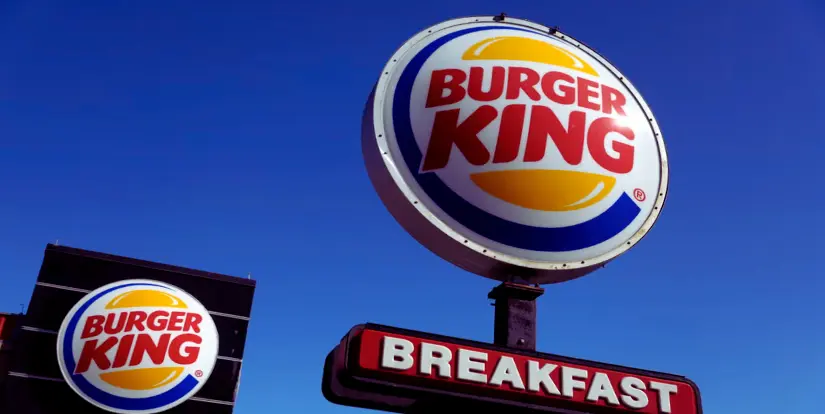In a recent legal development, fast-food giant Burger King finds itself embroiled in a class-action lawsuit that accuses the company of deceptive marketing practices.
Customers allege that the Whopper, one of Burger King’s flagship offerings, appears significantly larger on the menu than in reality.
US District Judge Roy Altman has approved the case to proceed, raising questions about how fast-food items are presented and marketed to the public.
Misleading Portrayal
The lawsuit alleges that Burger King misleads consumers by presenting the popular Whopper burger.
Customers claim the menu showcases the Whopper with a heftier patty and ingredients that seem to “overflow over the bun.”
Moreover, the lawsuit argues that the advertisements show the Whopper as 35% larger than the actual serving size and contain over twice the amount of meat as the real product.
This lawsuit brings to the forefront a contentious issue in the fast-food industry – the disparity between the mouthwatering images featured on menus and promotional materials and the actual product received by consumers.
Also Read, Baked and Caked Sheffield: Beloved Bakery Shuts Down Due to Cost of Living Crisis
Burger King’s Defense
Burger King has strongly refuted these claims, stating that it is not required to provide Whoppers that perfectly match the precise appearance shown in their advertisements.
The company argues that artistic license is an integral part of marketing, and it is not misleading customers intentionally.
“After Judge Altman’s ruling, a spokesperson for Burger King clarified that the flame-grilled beef patties featured in our advertisements are identical to the ones used in the millions of Whopper sandwiches served to our nationwide guests.”
Similar Cases in the Fast-Food Industry
Interestingly, Burger King is not the only fast-food chain grappling with such allegations. McDonald’s and Wendy’s are facing similar lawsuits in the United States, accusing them of engaging in unfair and deceptive trade practices.
These legal actions maintain that burgers from these establishments. They argue that, as depicted in marketing materials, these burgers are at least 15% larger than their real-life counterparts.
Furthermore, Taco Bell recently was embroiled in a lawsuit over its pizzas and wraps. Customers alleged that these items contained only half the amount of filling advertised, prompting questions about transparency in the fast-food industry.
The Way Forward
As the lawsuit against Burger King unfolds, the decision ultimately lies with the jurors to determine what constitutes reasonable marketing practices.
This case highlights the importance of transparency in advertising and how it impacts consumers’ expectations. In an era where visuals and presentation play a significant role in consumer choices. The outcome of this lawsuit could set a precedent for how fast-food chains portray their products.
It raises crucial questions about the responsibilities of companies in ensuring that the items they advertise align with the reality experienced by their customers.
Also Read, TikTok Introduces Enhanced Search Ad Features for Marketers
Conclusion
The legal battle between Burger King and its customers over the portrayal of the Whopper’s size on the menu reflects a broader concern within the fast-food industry.
The discrepancy between promotional materials and the actual product raises questions about the ethics and responsibilities of companies in advertising.
Frequently Asked Questions – FAQs
What is the Burger King lawsuit about?
The lawsuit against Burger King alleges that the company misleads customers. It claims this is done by making its Whopper burger appear larger on the menu than in reality.
What are the allegations against McDonald’s and Wendy’s in similar lawsuits?
McDonald’s and Wendy’s are also facing lawsuits accusing them of unfair and deceptive trade practices. These claims assert that their burgers in marketing materials are at least 15% larger than they are in real life.
What does Burger King’s defense entail?
Burger King argues that it is not obligated to deliver Whoppers that look exactly like the pictures in their advertisements. They assert that artistic license is a part of marketing.
Why is transparency in advertising important in the fast-food industry?
Transparency in advertising is vital because it impacts consumers’ expectations. When promotional materials don’t align with the product, it can lead to customer dissatisfaction and legal challenges.
What could be the broader implications of the outcome of this lawsuit?
The outcome of this lawsuit could set a precedent for how fast-food chains portray their products. It may also raise questions about their responsibilities in ensuring alignment between marketing materials and reality.











